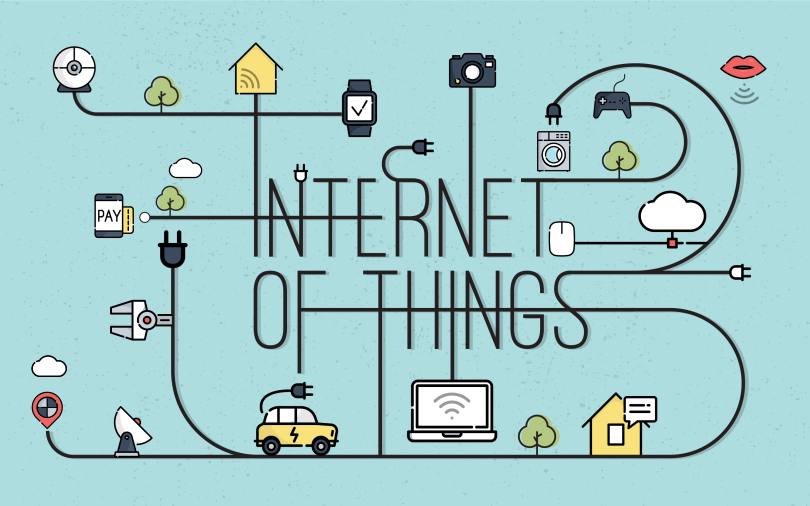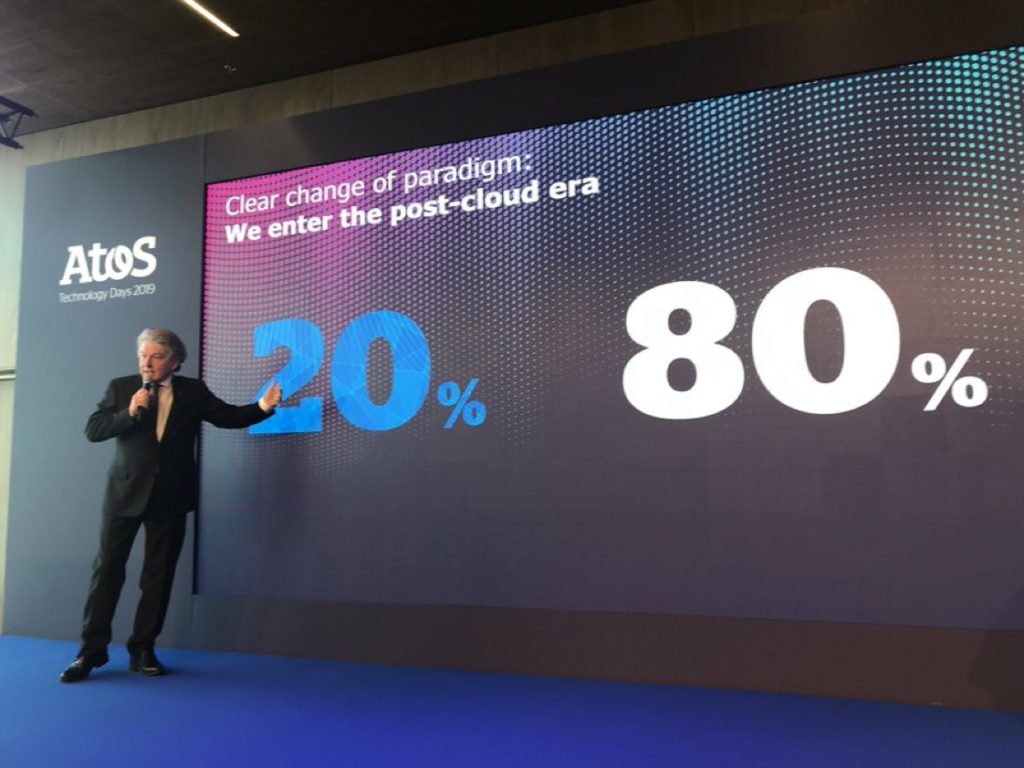By:
Eric De Grasse
Chief Technology Officer
Project Counsel Media
(modified version of my main conference report to focus on e-discovery aspects)
18 May 2019 (San Francisco, California) — As I have noted many times before, the breathtaking advance of scientific discovery and technology has hurled us headlong into a frenetic pace. We suffer from illusions of understanding, a false sense of comprehension, failing to see the looming chasm between what our brain knows and what our mind is capable of accessing.
It’s a problem, of course. Science has spawned a proliferation of technology that has dramatically infiltrated all aspects of modern life. In many ways the world is becoming so dynamic and complex that technological capabilities are overwhelming human capabilities to optimally interact with and leverage those technologies. Today it seems everything in technology is related.
For the e-discovery community, there is probably no better example than Internet of things (IoT) devices that can hold volumes of discoverable data that may make or break a case … but many attorneys often ignore such technology because of the difficulty in accessing and understanding the data, or the devices, or the architecture of the IoT world. So attorneys often bury their heads in the sand over it.
Events like Legaltech and ILTACON and several vendor-sponored workshops/conferences do make attempts with panels filled by lawyers and e-discovery vendors chatting about the unanticipated consequences of information stored on IoT devices that could be implicated in contentious business litigation, and business processes.
But e-discovery practitioners are still left befuddled because they still do not understand the whole picture, the technology stack of an IoT device which consists of three broad layers: the device layer, the connectivity layer, and the IoT Cloud layer. They do not understand the whole IoT umbrella. And if, perchance, a panel member does get into the operational aspects he or she is often just clipping from a secondary source that is now woefully out of date.
I miss the Legaltech days of old, long gone, when it truly focused on “tech” and you had vendors and Subject Matter Experts on the EDRM to take you through every stage, or you could learn almost everything about every technology stack that concerned e-discovery practitioners.
It might be why events like “IoT World” (the leading IoT conference and expo which just wrapped) have become so popular for both e-discovery practitioners and cyber security practitioners. There are multiple tracks that obviously focus on IoT vendors and primary users – cities, energy industry, homes/office, healthcare, transportation, etc., etc. – but there are structural tracks that provide the basis for understanding the IoT ecosystem:
– ARCHITECTURE: looking at the design, management, and maintenance of the physical infrastructure of an Internet of Things
– ENGINEERING: seeking how the embedded software works with the hardware, how sensors are integrated, how the processors work, what all of this connectivity means
– ANALYTICS: how to cull/access the data from IoT devices, primarily to make more informed investment and business decisions, but now this track also incorporates e-discovery
– SECURITY: insights and best practices for cybersecurity risk assessment, the how and why of the rise in massive cyber threat issues and what protection strategies to use, plus incidence response for participants and practitioners in the IoT ecosystem. This track, too, has incorporated e-discovery topics.
As you can imagine, with 13,000+ attendees, 300+ exhibitors and 12 session/panel tracks there is a lot to cover. For this post I will highlight a few points that will be of interest to our e-discovery industry readers:
The Internet of Things is moving off the cloud. “Edge computing” is beginning to dominate. This is one of the most prominent developments in the IoT sector. Previously, data used from various devices in an IoT setup was transferred to the cloud in raw form. Edge computing is changing that rapidly. Local points (storage devices) placed in a closed vicinity now gather the data, sort it and filter it. This data can then be transferred to the cloud – or left “on the edge”. Less bandwidth is consumed and latency is increased as a result of this. As several speakers noted, it is only a matter of time before edge completely takes over cloud computing. Various smaller setups will connect to make everything faster. The full development of 5G will accelerate this transition.
Greg and I have written extensively about edge computing. In brief, it is a distributed computing paradigm which brings computer data storage closer to the location where it is needed. Computation is largely or completely performed on the distributed device. Edge computing pushes applications, data and computing power (services) away from centralized points to locations closer to the user. The target of edge computing is any application or general functionality needing to be closer to the source of the action where distributed systems technology interacts with the physical world.
And it is starting to give law enforcement an ulcer as several presentations noted (and I imagine the e-discovery community will be challenged, too) because edge computing does not need contact with any centralized cloud, so there is no central depository of information. You need to find, track each device to get the information you want from the device.
And … in a strange way … it has been propelled by privacy worries. So you have companies like Synaptics that have developed new voice chips which offers natural language processing without the need for cloud-based transcription. It’s a voice chip plus a microphone that accepts voice commands … and does not need a Wi-Fi or Bluetooth connection. Which means you could come home and turn on a lamp by directly telling the lamp to turn on, without having to go through Alexa or Google.
And it will get worse. Soon, lawyers will be tasked with understanding the massive impact 5G will have on IoT. Why? Because these capabilities will for the first time allow industrial-scale deployments of autonomous vehicles, factory automation, and other consumer technologies that require large numbers of devices to remain in near-instantaneous communication across a wide area. But with separate fields and repositories of data.
When I met with Jackie Paxter at Qualcomm he noted that by serving as a foundation for the next phase of the digital revolution, 5G will not just offer a quantitative improvement over previous technologies via higher speeds, but it will be qualitatively different from earlier data networks in terms of the innovation that it enables. 5G networks will enable a new breed of digital applications that depend on ultra-fast, low latency, high-throughput communications, including driverless cars, advanced factory automation, and smart cities. And it will completely change normal IoT configurations, and where the data lies.
Side note: and this stuff at the edge is just developing more and more, such as “inference hardware”, intended to speed up machine learning inferencing on the edge. No cloud needed. For some background click here.
Google showed off “Translatotron” for its Home device. It marks an AI breakthrough in spoken language translation. Now, this was very cool – for me. I get a lot of calls on my Google Home device from people that do not speak my language (Dutch, but I also speak English-French-German). After hearing the audio samples of Google’s Translation speech-to-speech model, and being allowed to “mess with it”, I was pretty impressed. The project comes by way of three Google teams: Brain, Speech, and Translate. It’s not yet as fast as traditional AI speech platforms, but what amazes me is how it attempts to replicate the original speaker’s actual sound. It’s not perfect, but it’s promising. And … they are working on a version for audio transcript translation and Kevin Tofel (the Google presenter) told me there was a natural application/use for the legal market.
I have written quite a bit about Federated Learning, which is a way to share the advantages of aggregated data without aggregating the data, only aggregating the results – part of a solution for privacy. Google had some fun with this and was distributing a comic book at the event. To read it click here.
Yes, there was tons more on e-discovery but those are the highlights. Plus, I need to catch a flight back to Paris. Enjoy your weekend.





One Reply to “Notes from the “Industrial Internet of Things World” conference: blending architecture, security, analytics and e-discovery”